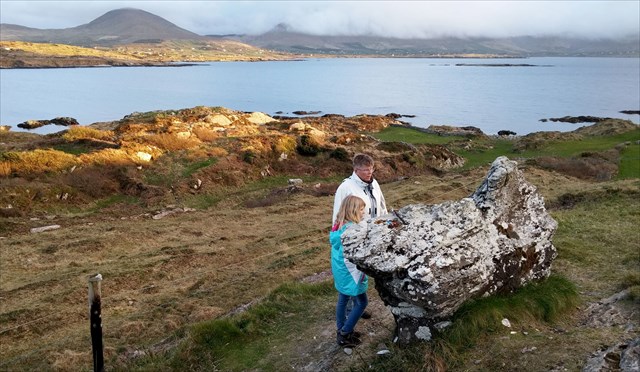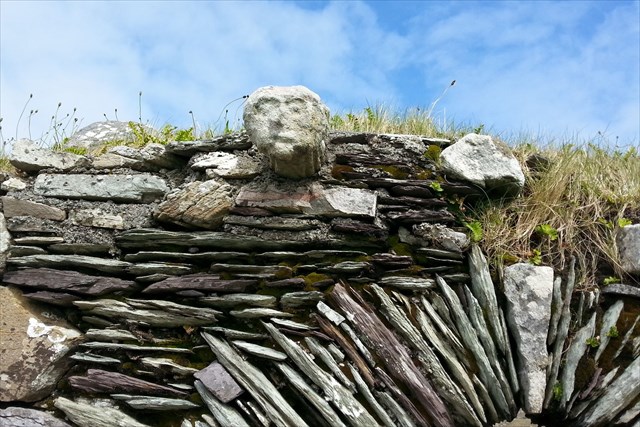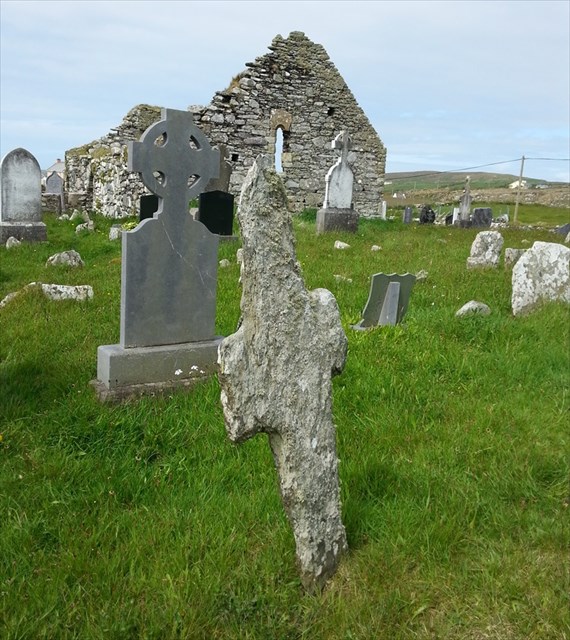
An Chailleach Beara'; The Hag of Beara
Legend has it that this rock which rises above Coulagh Bay represents the fossilized remains of the face of the Cailleach Beara awaiting her husband Manannan, God of the Sea, to return to her.

Her presence still haunts visitors who leave coins, trinkets and all sorts of other small offerings, on and around the rock.
The Hag of Beara is also the narrator of the finest old Irish poem in existence.
She is said to have lived seven life times before being turned to stone.
When you explore the ground around The Hag of Beara and observe that sea urchins hollowed cups on the rocks, it occurs to you that this rock once marked the high tide! A great ebbing has occurred here.
The ancient poem, The Lament of the Hag of Beare, seems to refer to such a catastrophe:
"I am Buí, the Old Woman of Beare;
I used to wear a smock that was ever-renewed;
today it has befallen me, by reason of my mean estate,
That I could not have even a cast-off smock to wear."
The ever-renewed garment would be the tide.
"Great wave of flood, and wave of ebbing sea,
the two of them I know, for both have washed on me."
"It is well for an island of the great sea: flood comes to it after its ebb;
as for me, I expect
no flood after ebb to come to me."
A great deal of this poem is concerned with aging and the loss of beauty.
Whatever the truth of the matter, The Hag is on a beautiful spot!

Kilcatherine Church and Graveyard
Nobody knows how old this ancient site is. This ruined medieval church dates back probably from the 7th century. The church is named after St. Caithighearn, reputedly known as the “Cat Goddess”.

It has a curious stone head that looks like a cat set above the door archway in the southern facade. According to the book written by Daniel M. O’Brien, “Beara, A Journey through History” gives this stone carved head an important clue about the age of the ruined building. It is seen in churches in Italy and Austria and regarded as pre-Christian and possible connected with snake worship.
It is thought to have been built by the same monks who built the beehive monastery on Skellig Michael.
It is as well home to one of the earliest stone crosses in Ireland: The leaning stone.

It is an 8th- or 9th- century old cross which was published in the National Library. From the monastic Map of Ireland the site would appear to have been a nunnery rather than a monastery.
The cache: At the top coordinates you have to search for the coordinates for wp2 (don't touch the rock, it's somewhere else), at wp2 you will find the remains of an old church, there you have to calculate the coordinates for the final:
A = How many families are buried inside the ruin?
B = Find the family which is most frequent, count the amount of letters in there surname
Now the best way is to go by car to the final, it's a bit more than 1km:
Final: N 51° 4A.(A+B)01 W 009° 59.01A